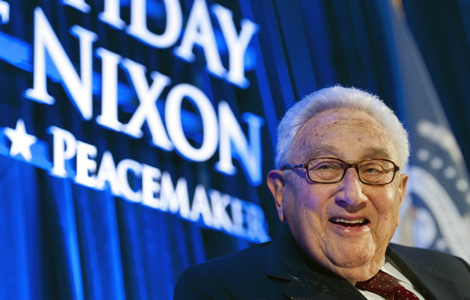Did we leave prisoners of war behind in Indochina?
I have been involved with this issue for over 40 years. First as a young army intelligence officer tracking U.S. POWs held in the Danang area.
Then as a journalist for Time magazine and The New Republic, and as the author of four books on the war, including SURVIVORS, the true story of nine American POWs held in South and North Vietnam. I’ve talked to many former prisoners of war and the families of the missing the action. I’ve interviewed the officials involved at the Pentagon and State Department. I have read DIA reports and transcripts of every congressional hearing that investigated the issue.
Here is the way I see it.
The Nixon-Kissinger Lie
It goes back to money and desperation. The North Vietnamese wanted money. Nixon was desperate to get out of the war.
This was February 1, 1973. The North Vietnamese were stalling on signing the peace agreements, trying to get the best deal. So Nixon sent them a secret letter, promising $3.25 billion in war reparations—or “reconstruction aid.”
Nixon wasn’t called “Tricky Dick” for nothing. He attached a one-sentence amendment to his letter. The amendment said that the agreement would be “implemented by each member in accordance with its own constitutional provisions.”
This innocuous-sounding phrase let Nixon and Kissinger weasel out of the deal by claiming it meant the money was contingent upon U.S. congressional approval. They knew at the time Congress wasn’t going to cough up money for war reparations, the issue was too controversial. In fact, Congress passed a law forbidding direct aid to North Vietnam.
NVA: “Show us the money.”
It was one thing to think the Vietnamese would turn over all American POWs at the time of the 1973 ceasefire if they had nothing further to gain, but quite another to believe they would give everybody back—their only insurance, in effect—if they had been promised a big payoff.
After Nixon resigned over Watergate, the NVA tried to outmaneuver Kissinger by reading the secret letter to a U.S. Congressional delegation visiting Hanoi in 1975. The NVA left out the amendment. But Congress finally pried the whole letter out of the State Department. By this time, though, the American public was totally fed up with the war and didn’t want to hear about it.
NVA: “Or we’ll blackmail you.”
The North Vietnamese were not so stupid as to get caught holding back American prisoners of war from the Hanoi Hilton. But the scene was set in Laos for them to carry out a little blackmail without ever having to admit they had not returned all the POWs.
Laos gave the Vietnamese what the Nixon administration liked to call, when plotting its own devious moves, “plausible deniability.”
Hanoi is only about a 100 miles from the Laos border. There are a number of mountain tribes in Laos. We are familiar with the Hmong because they were led by the CIA and fought on the American side. But there were other tribes controlled by the North Vietnamese.
It would have been the easiest thing in the world to leave POWs under guard by tribesmen in a jungled area of Laos where you couldn’t see 20 feet in front of you. The tribes people weren’t talking and the secret could be confined to a very small number of the Hanoi leadership.
Laos:
The Shell Game
The Shell Game
The U.S. and North Vietnam always played a shell game with each other in Laos. Both sides treated Laos as a separate conflict from the Vietnam War.
Washington maintained the charade of Laos’ independence and “neutrality” by using the CIA to run the ground war, while downplaying the massive bombing by U.S. planes flying from Thailand. For years the U.S. Air Force claimed that planes shot down in Laos were actually shot down in North Vietnam.
 |
| McCain with Mai Van On |
The North Vietnamese believed they were making more off the shell game than the U.S. And in fact they were. If the U.S. had treated Laos as part of the Vietnam War and sent troops there from start, they could have closed down the Ho Chi Minh trail and strangled Hanoi’s supply route into Vietnam.
528 MIAs in Laos
When the 1973 Vietnam ceasefire was signed, 528 Americans were listed as missing in Laos. Their capture was considered a separate issue from the POWs held in Hanoi. And no POWs were returned from Laos at the time of the 1973 ceasefire except nine who had been moved directly to Hanoi immediately after their capture.
The fate of the 528 presumably would be determined when the Laotian conflict was resolved. But that didn’t happen. The Americans held in Laos disappeared without a trace, as if into a black hole. Based on statistical probability alone, it was highly unlikely that they had all died or been killed at the time they were shot down.
In fact, the Pentagon had more than statistical probability to go on. It had detailed intelligence, including 300 reports (97 from CIA) and even photographs that indicated some of them had been held in prison camps and caves in northern Laos, near North Vietnam’s border—a hundred miles or so from Hanoi.
Pathet Lao: “We’re holding 158.” READ MORE>>

